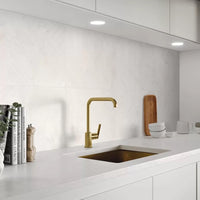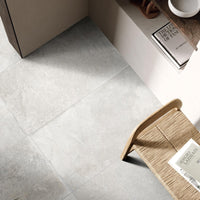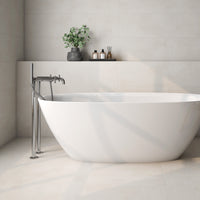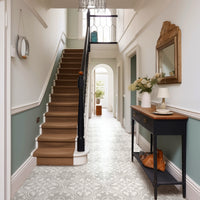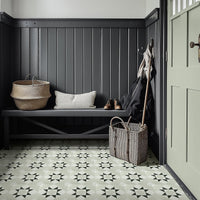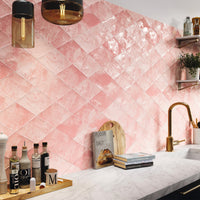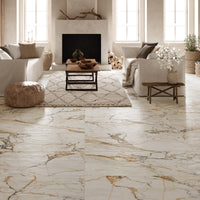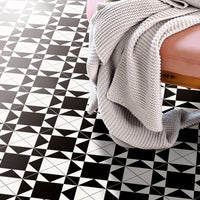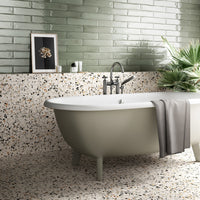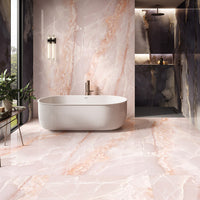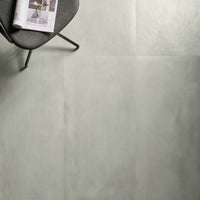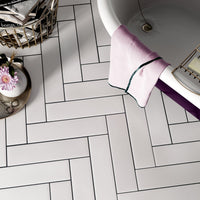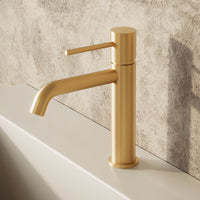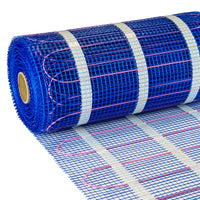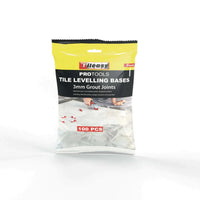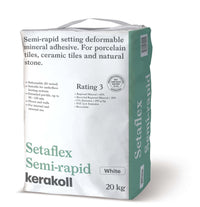When designing indoor or outdoor spaces, few materials can compete with ceramic tile in terms of versatility: of colour, of pattern, of surface finish, and of shape. But ceramic wall and floor tiles also offer an extra aesthetic dimension: the potential to install the tiles in different patterns and configurations.


Indeed, the installation possibilities with ceramic tiles are virtually infinite. The starting point is the geometric format of the selected tile or tiles; be that square, rectangle, triangle, rhombus, hexagon, etc. These geometric forms can be used singularly or combined with one, two or more different shapes or sizes.
This allows for a huge array of possible combinations. To clarify the creative process, here are a few simple patterns that can be used to meet almost any project’s individual design requirements.
1) Straight laid horizontal
This is one of the simplest and most common tile patterns. Here the ceramic tiles are placed, one after another, in a single straight line, creating a set of regular parallel rows. The resulting installation delivers a strong sense of harmony and order.


2) Straight laid vertical
This installation is a simple variation of the previous pattern, that has been rotated by 90o into a bold upright configuration. Here the placement of the ceramic tiles, one after another in a vertical position, creates a strong perception of height in wall tile application.


3) Running bond or brick bond
In this popular installation scheme, ceramic pieces are installed in an alternating pattern so that the vertical joints fall in the middle of the upper or lower rows, creating a dynamic, stepped, look.


4) Displaced running bond
In this option, the vertical joint of the pieces is moved, resulting in a break in the alignment of the different pieces. This has the effect of disrupting the formal alignment of the traditional running bond, achieving a more original and striking look.


5) Herringbone or chevron
This installation features alternating rows of ceramic pieces placed in right and left angled inclinations. This creates a repeating V pattern: simple yet powerful. The use of chevrons has been one of the main trends in the ceramic tile sector in recent years, alongside the return of multi-faced geometric forms, notably the hexagon.


6) Triangular combinations
Joining rectangular triangle formats by their hypotenuse, in a succession of rows, can create original compositions. This unusual pattern achieves its maximum aesthetic impact if it features different coloured triangular tiles. This is not a look for the faint-hearted.


7) Hexagonal combinations
Placing rows of hexagonal pieces horizontally and vertically achieves a honeycomb-shaped design, which is accentuated by the use of different colours, textures, and finishes. In experienced hands, this can be a particularly versatile and effective design device.


8) Mixed format combinations
When patterns are made by combining different formats it is possible to achieve finishes with great expressive and visual richness. Combining, for example, a rectangular format with a hexagonal one, generates figures in which the rectangle frames the hexagon, producing a dynamic volumetric effect.


The information and images used in this article were provided by Tile of Spain -ASCER.
